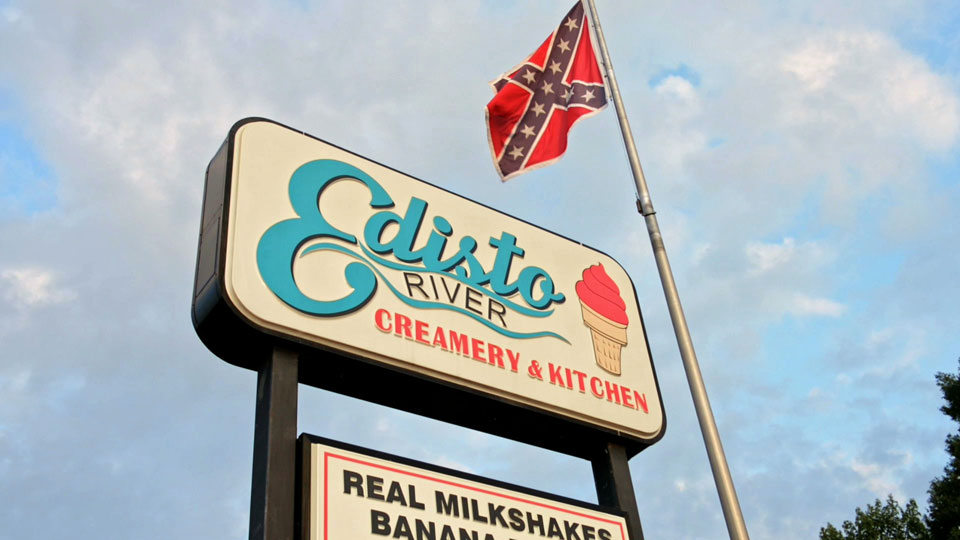
LOS ANGELES—The AFI Fest returned to Hollywood for live, in-person screenings and events, although there was also a virtual component for watching many of the feature, documentary, short, indie, studio, and foreign productions that Los Angeles’ largest annual film festival presented in 2021. Some of the screenings were accompanied by talent who introduced and/or spoke about their films when they were shown at the TCL Chinese Theatres.
Meet the Press 4: Ghosts & Legacies
According to the AFI’s website: “In partnership with NBC’s Meet the Press, these short documentaries spotlight compelling stories about pressing issues facing our society with conversations moderated by NBC News journalists.” Meet the Press, of course, is the long-running TV program where newsmakers are questioned by a moderator, and a panel of journalists holds forth on topics of the day. Accordingly, all of the nonfiction films screened at AFI Fest in collaboration with Meet the Press were topical in nature, as in its session 4. And many of them dealt with the pressing topic of race, as America undergoes a long overdue racial reckoning. Here are brief reviews of some of the films I’ve seen:
Meltdown in Dixie
File this one under Confronting Racism Way Down Yonder in the Land of Cotton. This 40-minute award-winning film chronicles one of today’s hottest flashpoints—Confederate symbology, mostly in the South, but sometimes making special guest appearances at the U.S. Capitol. As part of a kind of cultural revolution, African Americans and “woke” (you know, humans who are conscious, as opposed to being asleep) non-Black allies are struggling to purge states such as South Carolina, where this work was shot on location, of flags, monuments, statues, etc., that are publicly displayed and extol the Confederacy.
As Meltdown documents, the clash between Black Lives Matter supporters and latter-day would-be Johnny Rebs came to a head in Orangeburg, S.C., after a psychotic racist gunned down nine Blacks at a Charleston church in 2015. Emily Harrold’s film zooms in on the movement to remove a prominent monument and Confederate flag flying on a flagpole at an ice cream shop, the Edisto River Creamery in Orangeburg, despite (or because of?) the fact that the town is currently predominantly Black.
During the in-person Q&A that followed the screening in the Chinese 4 Theatre, Antonia Hylton, an Emmy Award-winning correspondent for NBC News and MSNBC and a young woman of color, asked one of Meltdown’s producers and directors of photography, Seth Gadsden, about interviewing white Southerners who insist on and persist in flying Confederate flags and belong to fraternal orders that perpetuate the antebellum South’s legacy. Should people who advocate honoring the heritage of the Confederacy, which of course includes slavery, be given a platform in a documentary to espouse and foment their dubious causes in 2021 and beyond? Gadsden, who identified himself as having been born in South Carolina, said these were very difficult interviews to shoot and that he felt imperiled at a screening of Meltdown for the Sons of Confederate Veterans.
Although some of Meltdown’s interviewees definitely expressed white supremacist viewpoints, I don’t recall any obscenity-laced rants full of racial slurs per se onscreen. I personally found it educational to listen to their point of view in order to try and understand where they are coming from. This can help anti-racists to forge an effective response to their pixie Dixie delusions. But as Ms. Hylton astutely pointed out, there is a danger in providing these notions airtime where they could be heard by receptive ears and might be sparks on kindling leading to another type of meltdown.
Of course, the opposing perspectives are aired in Meltdown, including an African-American activist agitating to remove all Confederate symbols from public places and a Black attorney seeking to remove the Creamery’s rebel flag and monument through the courts and the city council process. Freedom of speech, balance, and allowing all worldviews to be expressed are tricky things, but I felt Meltdown in Dixie did a fair, compelling, and entertaining job as it threaded the First Amendment needle in order to candidly discuss this thorny subject of racism.
For more info see Meltdown in Dixie, where you can also see the trailer.
Postcards on the edge

Christine Turner’s haunting 15-minute film also deals with racist artifacts and mementos of a sort—the titular Lynching Postcards: Token of Great Day, that were intended as gleeful, grisly visual reminders of white supremacy. It’s stunning what some people will do to make a buck and what folks will buy, but there was a thriving business for photographers who shot many of the 4,000 extrajudicial executions of Blacks by white mobs from 1880 to 1968. These images memorialized this gruesome vigilante justice, which was intended to terrorize African Americans and in graphic terms, to show them who’s boss and who is running the show: whitey.
Rather remarkably, there was a market for postcards of these horrendous deeds, which were then sent through the U.S. mail the way sightseers might send a postcard of, say, Old Faithful—as a souvenir of an important event that must be remembered. It’s astonishing that under American apartheid, the white crowds at these hangings and burnings don’t, like Mafia dons, hide their faces when the camera is pointed at them, but instead, they smile and delightedly point at the strung-up and often charred corpses. These euphoric whites, who are complicit in these horrors, know that U.S. law would never punish them, thus their brazenness and glee. Is it any wonder that the Nazis took inspiration for their Nuremberg race laws from American discrimination and segregation?
Lynching Postcards is a difficult film to sit through because of its candid, terrifying imagery. But this is an important picture that makes us ponder: Why have none (that translates numerically to exactly 0) of the 200 anti-lynching measures that have been proposed never been, to this day, enacted into law? The thought-provoking (if at times stomach-turning) Lynching Postcards is co-executive produced by Shelia Nevins and the great Stanley Nelson, who just codirected a movie about a mass lynching: Attica. (See my interview with Nelson here.) Lynching Postcards director Christine Nelson is to film what the heroic Nat Turner was to plantation rebellions.
For more info see Christine Turner.
Murder, She Didn’t Write

The third and final film that formed part of “Meet the Press 4: Ghosts & Legacies,” Melissa Gira Grant and Ingrid Raphael’s They Won’t Call It Murder is about the Columbus, Ohio, police department. But instead of extolling the virtues of the men in blue like all the agitprop that floods our airwaves with propagandistic TV shows like NCIS, et al, this 20-minute short investigates the numerous police killings by Columbus’ “finest”—none of whom have been found guilty or punished for these shootings. Of course, most of the victims are—hey, how did you guess?—Black, and most of the cops are—you guessed it again!—Caucasian (the only exception being one Black policeman who is implicated in shooting a white woman).
It’s interesting to note that Columbia, S.C., figures in Meltdown in Dixie (and, if memory serves correctly, in Lynching Postcards), just as Columbus, Ohio, is the key location in They Won’t Call It Murder. The root for the name of both Columbia and Columbus comes, of course, from Christopher Columbus, America’s harbinger of genocidal colonialism.
The well-made, troubling They Won’t Call It Murder is of a piece with the other two works in the Meet the Press portion of AFI. Whoever selected these films and then curated them together in this program deserves to be praised, as do the individual films themselves.
For more information see: AFI FEST.












Comments